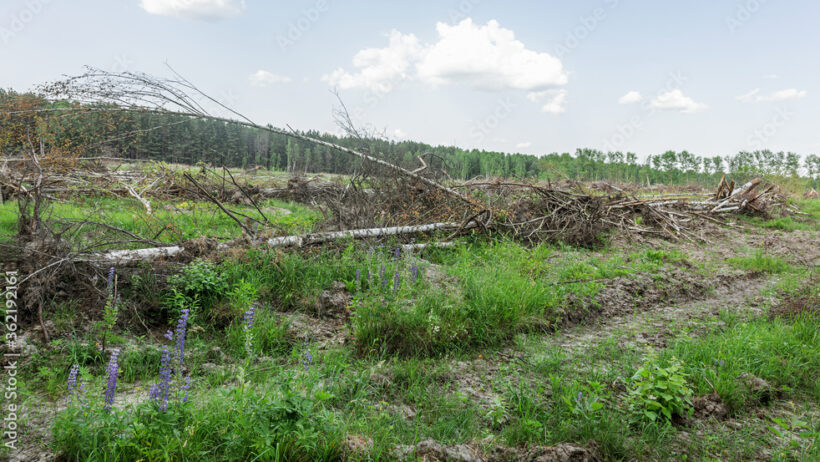Deciduous forests, characterized by their broadleaf trees that shed leaves annually, are among the world’s most dynamic ecosystems. These forests play a vital role in maintaining biodiversity and regulating climate, yet they are increasingly susceptible to the tumultuous effects of global warming. As temperatures rise and seasonal patterns shift, deciduous forests find themselves in a state of flux, with profound implications for their health and sustainability.
Global warming is fundamentally altering the climatic conditions that deciduous forests rely upon. One of the most striking changes is the alteration of seasonal patterns. Traditionally, these forests experience a distinct rhythmic cycle, with spring awakening from the dormancy of winter, summer flourishing in vibrant life, autumn draping the landscape in a quilt of color, and winter creating a serene stillness. However, increasing temperatures and shifting precipitation patterns are disrupting this cycle, causing unpredictable growth patterns and altering phenological events.
Phenology, the study of seasonal biological events, is critical to understanding how deciduous forests are responding to climate change. Species that inhabit these forests, such as oak, maple, and birch, rely on specific temperature cues to trigger processes like leaf emergence and flowering. With warmer winters and earlier springs, these cues are thrown into disarray. For instance, certain tree species may leaf out too early, only to be damaged by late-season frosts. Such dissonance can compromise the trees’ overall health, diminishing their ability to photosynthesize and, in turn, weakening their resistance to pests and diseases.
Furthermore, altered precipitation patterns exacerbate the challenges faced by deciduous forests. Many regions are experiencing fluctuating rainfall amounts, resulting in periods of severe drought followed by intense rainfall events. Deciduous forests thrive in a balanced hydrological cycle; disruptions can lead to drought stress, reduced growth rates, and increased vulnerability to invasive species. In the aftermath of heavy rains, soil erosion can occur, damaging root systems and further jeopardizing tree health.
These erratic climatic changes also foster the proliferation of invasive species. Disturbed environments are particularly conducive for invaders such as the emerald ash borer, which has wreaked havoc on native ash trees. The weakening of indigenous species creates openings for these non-native species to proliferate unchecked, thereby altering forest composition and reducing native biodiversity. This shift undermines the intricate relationships that have evolved over millennia, diminishing ecosystem stability and resilience.
The socioeconomic implications are equally concerning. Many communities depend on the ecosystem services provided by deciduous forests, ranging from timber and non-timber products to recreational opportunities. As these forests change, the livelihoods and cultural practices tied to them are at risk. Local economies dependent on industries such as timber, tourism, and hunting may experience declines, posing challenges for sustainability and community cohesion.
Moreover, the role of deciduous forests in carbon sequestration cannot be overstated. Trees are vital in capturing carbon dioxide from the atmosphere and storing it within their biomass, thus mitigating climate change. However, as global temperatures rise, forests may become less effective carbon sinks. Stressors such as drought, disease, and changes in growth patterns can diminish their ability to sequester carbon, complicating efforts to mitigate the impacts of climate change.
Habitat fragmentation is another pressing issue exacerbated by climate change. As temperatures rise, certain tree species may shift their ranges northward or to higher elevations in search of their optimal climatic conditions. However, human-made structures like roads and urban development can impede these migratory patterns, leading to isolated populations that struggle to adapt. The inability to migrate may increase the extinction risk for various species, further straining the delicate web of life within deciduous forests.
Adaptive management strategies are essential for fostering resilience within deciduous forests. This involves a combination of conservation efforts, sustainable land-use practices, and public education initiatives aimed at raising awareness about the ecological significance of these forests. Thinning overstocked forests can enhance tree vigor and reduce competition for resources, making them more resilient to environmental changes. Encouraging diversity in tree species can also create a buffer against invasive species and diseases, fostering a robust ecosystem.
Restoration efforts focused on reestablishing native plant communities and controlling invasive species are critical. Engaging local communities and stakeholders in these efforts can help garner support and resources necessary for successful restoration initiatives. Through community involvement, educational programs can also highlight the importance of deciduous forests, empowering individuals to advocate for climate action.
Mitigating climate change itself is paramount for the health of deciduous forests. Global actions aimed at reducing greenhouse gas emissions will have lasting positive effects on these ecosystems. Employing renewable energy sources, facilitating reforestation projects, and implementing sustainable forestry practices are just a few avenues through which we can address the environmental crisis.
In conclusion, deciduous forests are undergoing significant transformations as a direct response to global warming’s shifting seasons. The vital role they play in supporting biodiversity, providing ecosystem services, and sequestering carbon is under threat. Concerted efforts on multiple fronts—including adaptive management, community engagement, and climate mitigation—are essential for preserving these crucial ecosystems for future generations. Each season may bring changes, but through collective action, we can work towards ensuring that these forests continue to thrive amidst an uncertain climate.








